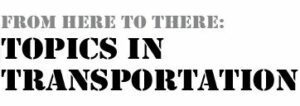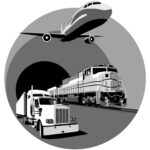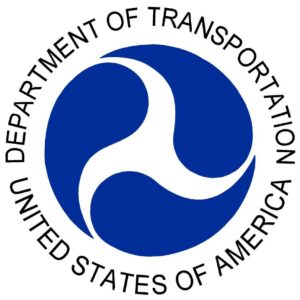Written on: October 1, 2014 by SprayTM


By Steven Charles Hunt, Shipmate, Inc.
The U.S. Dept. of Transportation’s (DOT) Pipeline & Hazardous Materials Safety Administration (PHMSA) published its Notice of Proposed Rulemaking, HM-253, on Aug. 11, 2014 (79 FR 46748), which will revise the Hazardous Materials Regulations (HMR) for return shipments of certain hazardous materials by motor vehicle.
In this important rulemaking, PHMSA will define “reverse logistics” for dangerous goods that are intended to be returned to, or between, a vendor, manufacturer, distributor or other person for the purpose of returning for credit, recalling product, replacement or other reasons. PHMSA is proposing to create a new section within the HMR that will provide an exception for certain hazardous materials that are transported in a manner that meets the definition of “reverse logistics.”
PHMSA will clearly identify those hazardous materials that are entitled to the proposed regulatory relief, and will delineate the requirements for packaging, hazard communication, training and segregation applicable to reverse logistics shipments.
Comments on the proposed rule must be received by Oct. 10, 2014.
Currently, the HMR do not provide any specific exceptions for shipments made in the reverse logistics supply chain. Consequently, all hazardous materials that are being shipped from a retail outlet back to the distribution facility are subject to the same requirements as when they were originally shipped. The retail outlet is responsible for ensuring that the goods are properly marked, labeled, described, packed, packaged, stowed, segregated and declared for transport.
PHMSA has cited the key areas of concern associated with reverse logistics shipments including:
This has been very problematic for many retailers, as the condition of the containers prior to return is questionable, and the original packaging, marking and labeling is no longer available in most cases. Given the value of the product being returned for credit, and a general lack of knowledge, many of these hazardous materials have been returned improperly.
Based on extensive research and enforcement actions by the agency, PHMSA has learned that the current requirements applicable to reverse shipments is misunderstood or overlooked. PHMSA believes that reverse logistics issues associated with these dangerous goods will continue to rise with the increased consumption of consumer products in a growing economy. Based on the many petitions submitted by industry trade groups and several big box retailers, PHMSA believes that it would be beneficial to work with industry to facilitate the movement of hazardous materials in the reverse logistics supply chain.
Under the proposed regulations, DOT will define “Reverse Logistics” in 49 CFR §171.8 as “…the process of moving goods from their final destination for the purpose of capturing value, recall, replacement, proper disposal or similar reason.”
PHMSA will create a new section, 49 CFR §173.15– —Reverse Logistics–General Requirements & Exceptions, which authorizes a limited number of hazardous materials, including:
(1) Division 1.4S and 1.4G fireworks, flares and signals and ammunition;
(2) A Class 3, 8, 9, Division 4.1, 5.1, 5.2, 6.1, 6.2 material contained in a packaging having a gross mass or capacity in each inner packaging not exceeding:
(i) 0.5kg or 0.5L for a Packing Group I material;
(ii) 1kg or 1L for a Packing Group II;
(iii) 5kg or 5L for a Packing Group III, or ORM–D material;
(iv) 30L for a diluted mixture, not to exceed 2% concentration, of a Class 3, 8 or 9 material or a Division 6.1 material;
(3) A Division 2.1 or 2.2 material in a cylinder or aerosol container with a gross weight not over 30kg. For the purposes of this section, a cylinder or aerosol container may be assumed to meet the definition of a Division 2.1 or 2.2 materials, respectively, even if the exact pressure is unknown; and
(4) A Division 4.3 material in Packing Group II or III contained in packaging having a gross capacity not exceeding 1L.
Packaging
All packaging must be leak-tight for liquids and gases, sift proof for solids and be securely closed, secured against shifting and protected against damage. All inner packaging must be secured against movement within the outer package and protected against damage under conditions normally incident to transportation. For liquids, the inner packaging must be leak-proof and the outer packaging must contain sufficient absorbent material to absorb the entire contents of the inner packaging. For solids, inner packaging must be sift-proof.
In addition, each material must be packaged in the manufacturer’s original packaging, if available, or a packaging of equal or greater strength and integrity. Outer packaging is not required for receptacles (e.g., cans and bottles) that are secured against shifting in cages, carts, bins, boxes or compartments. However, any compromised receptacle must be placed in an inner packaging or outer packing that will prevent spillage in transportation.
Aerosols must be packed to prevent inadvertent discharge of the contents from the aerosol packaging during transport. Each aerosol container must be secured with a cap to protect the valve stem. Other cylinders or pressure vessels containing Division 2.1 or 2.2 materials such as DOT–39 cylinders and cylinders containing limited quantities of compressed gases must conform to the packaging, qualification, maintenance and use requirements of the HMR.
Hazard Communication
With respect to the marking and labeling, the outer packaging, other than a cylinder shipped as a single packaging, must be marked with a common name or proper shipping name to identify the hazardous material it contains.
Training
PHMSA will require that each person who offers or transports a hazardous material under the reverse logistics exception must be familiar with the requirements of this 49 CFR §173.157.
Employees that prepare reverse logistics shipments, as defined in 49 CFR §171.8 of the HMR, subject to the exceptions in this new section, are not subject to the training requirements of this subchapter provided:
(1) The employer has identified the hazardous materials subject to the reverse logistics rule, has verified compliance with the appropriate conditions and limitations and has provided training and supervision to persons preparing or offering these shipments for transportation, or transporting shipments in reverse logistics to make the provisions of this rule effective.
(2) The employee has received appropriate training applicable to the material to be offered in transport in accordance with the provisions of this rule. The training must enable the employee to recognize the hazardous materials, identify the hazards associated with the applicable material and prepare the shipment as provided by this section.
(3) The employer must maintain a record of those employees receiving the training required by this section; and
(4) The operator of a motor vehicle that contains a reverse logistics material must be informed of the presence of the hazardous material and must be informed of the requirements of this section.
Other Requirements & Exceptions
Reverse logistics materials may be transported by motor vehicle with other hazardous materials without affecting its eligibility for the exceptions provided by this rule.
However, any hazardous materials that may react dangerously with one another may not be transported in the same outer packaging. However, different hazard classes of materials in reverse logistics may be transported in the same cargo transport unit provided that they are adequately separated to prevent commingling of materials that may result in a dangerous reaction in the event of an accidental release during transport.
Shipments made under the Reverse Logistics Exception are subject to the incident reporting requirements in 49 CFR §171.15, but shipments prepared, offered for transportation, or transported under this exception are not subject to any other requirements of the U.S. DOT’s Hazardous Materials Regulations.
For questions regarding this rule, its implementation or impact, or to obtain a copy of the Notice of Proposed Rulemaking, contact the author at steve@shipmate.com or (310) 370-3600.